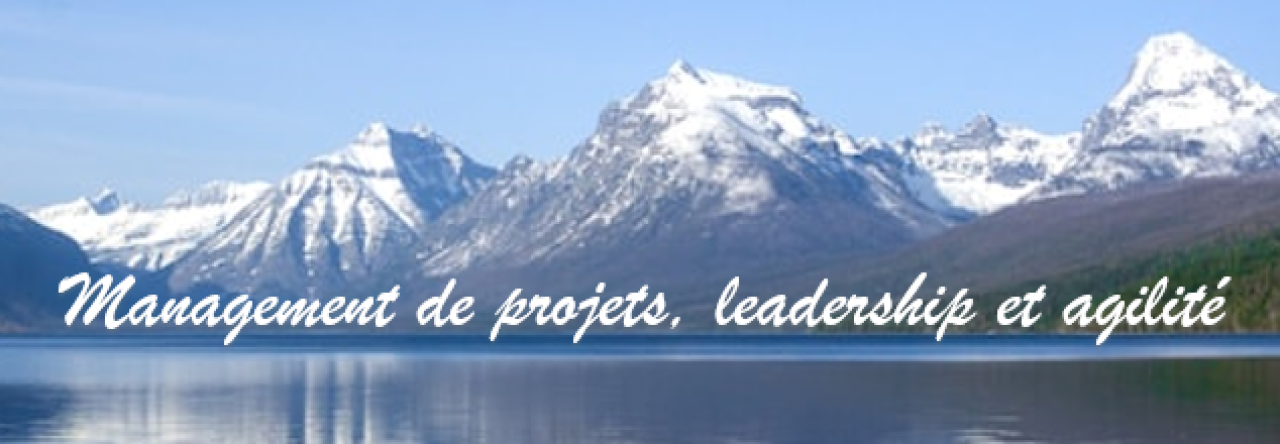A French version of this post can be found here: soyons WAGILE (W-aterfall + AGILE) : « une main de fer dans un gant de velours »
Marc Burlereaux has presented an article written by Christine Rieu, Sylvain Gautier and himself about the pitfalls when introducing Agility at the Project Zone Congress 18,19 March 2013 in Frankfurt.
The Agile approach used for projects, or new product development, ensures a greater flexibility with iterative design, lighter documentation and formalization, more interactivity and efficiency in the conduct of meetings, and especially more customer involvement throughout the project (Pichler, 2010). By coupling a Lean approach to these Agile methods; we remove all unnecessary and ‘non-value added’ steps to minimize waste and to maximize the expected value of the product (Larman & Vodde, 2010). This seems to be the panacea!
But it is not straightforward to implement this type of approach and the Project Manager may be asked many questions:
 o How will these approaches be integrated successfully in mature Project Management organizations that are more familiar with traditional software V-Model (software development) or Waterfall Model?
o How will these approaches be integrated successfully in mature Project Management organizations that are more familiar with traditional software V-Model (software development) or Waterfall Model?
o How will the Release Manager be in a position to facilitate the delivery of products developed with Agile and Lean approaches? This is particularly relevant given his/her role is to keep adherence to rigid processes for minimizing the risks associated with change, which is often seen by the Agile Project Manager as an awful slowdown in the delivery process.
o How will these deliveries fit in the whole Release Management process, including testing procedures (unit, integration and acceptance testing of applications), the production of operating technical documentation, user guides, and the creation of installation and deployment procedures?
o How will you avoid Agile being used as an excuse for lax and ineffective behaviours, such as removing documentation?
The success of such projects imposes a balance between a comprehensive Agile approach and a discipline warranty by the Release Management process. Hence the title of our paper, « An Iron Fist in a Velvet Glove. »
 This presentation is based on lessons learned gathered during project experiences combining Agility and Lean Management in various fields of industry and banking organizations. We explain our vision of the prerequisites for a project to be eligible for Agile methods. The thread of the presentation is to then illustrate our experiences with emphasis on Agile best practices that we have identified as key success factors. We have divided these keys points throughout the various phases of project development, with a particular emphasis on the early stages of scoping and preparation, and then the final stages of acceptance (technical and business) and finally the transition to production.
This presentation is based on lessons learned gathered during project experiences combining Agility and Lean Management in various fields of industry and banking organizations. We explain our vision of the prerequisites for a project to be eligible for Agile methods. The thread of the presentation is to then illustrate our experiences with emphasis on Agile best practices that we have identified as key success factors. We have divided these keys points throughout the various phases of project development, with a particular emphasis on the early stages of scoping and preparation, and then the final stages of acceptance (technical and business) and finally the transition to production.
The following anecdote illustrates that sometimes agile’s team are surprisingly facing rigidity:
 Jack Duggal, a seasoned Program Manager with over 30 years of experience in project management, said at a conference organized by PMI (Project Management Institute) in Geneva in 2012: « You can sometimes blame rigidity in the application of agility. In a Scrum meeting, which assumes that you are standing, a person a little tired had expressed the need to sit down: this was refused, as matter of principle! »
Jack Duggal, a seasoned Program Manager with over 30 years of experience in project management, said at a conference organized by PMI (Project Management Institute) in Geneva in 2012: « You can sometimes blame rigidity in the application of agility. In a Scrum meeting, which assumes that you are standing, a person a little tired had expressed the need to sit down: this was refused, as matter of principle! »
Whatever method is chosen, we should be able to get inspired by other approaches and benefit from best practices:
As an example, PMI, which is the authority in the management of « traditional » projects, has naturally opened the door to the principles of Agility by recently creating a new credential PMI-ACP (Agile Certified Practitioner) and integrating Agile and Lean Management into traditional project management. For example, the PMBOK 5th edition now takes into account Agile « Adaptive Life Cycles » with section 2.4.2.4 covering iterative and incremental methods. These methods involve short iterations of 2 to 4 weeks with fixed time and resources (i.e. time boxing).An important aspect to add is the risk management: this is an example of good practice derived from traditional methods integrated into agile approaches.
Finally, we conclude by reminding the four principles issued by the Manifesto for Agile software development written by Kent Beck and 16 other signatories (K. Beck et al, 2001) which by the way could be followed regardless of the chosen project management methodology:
We are uncovering better ways of developing software by doing it and helping others do it. Through this work we have come to value:
 Individuals and interactions over processes and tools
Individuals and interactions over processes and tools- Working software over comprehensive documentation
- Customer collaboration over contract negotiation
- Responding to change over following a plan
That is, while there is value in the items on the right, we place more value to the items on the left.
The Agile approach should be considered rather as a philosophy of development
In this presentation, we wanted to give very practical advice to implement a successful agile approach, especially in organizations which will combine it with more traditional models. It is inspired by our experiences in various project contexts and emphasizes the importance of deeply understanding the benefits and implementation impacts of this new way (i.e. not just use it as a « tool box with an integrated checklist »). The Agile approach should be considered rather as a philosophy of development, which focuses on employee involvement and commitment. One has to take in each method that is « good for business », knowing that every business is unique and has its own specific operational characteristics. Opposed to traditional methods, Agile methods are a revolution, but they can also bring their share of the burden and stress, depending on the implementation and the use.
 The Agility is good but to control it is even better …
The Agility is good but to control it is even better …
– The Scrum approach is not a panacea, especially if it is not understood and supported by the Management and Business Analyst (MOA)
– The Lean Approach coming from the industry may not be implemented in all contexts
– The AGILE mindset is primarily the key success factor that will ensure a smooth Agile implementation
– We must select the right AGILE tools best suited to the company
– A pragmatic coaching is a key success factor
– The dogmatism must be forgotten
– And we must contextualize the process that could not be standard for all areas (from the space industry to Google, through aerospace, automotive, banking …).
Last but not least, misunderstood and badly launched / implemented Agility may cause more damage than traditional methods.
Let’s Be WAGILE! Contraction of WATERFALL (traditional methods of development) and AGILE … hence Agility: An Iron Fist in a Velvet Glove!
 Christine RIEU, works as an Associate Professor in the Listic laboratory and has carried out research on Knowledge Management for the past 15 years. Christine teaches Project Management at the IUT of Annecy where she also holds the position of Head of International Relationships. . Christine is also a founding member of “PMI Pôle des Pays de Savoie”, France Chapter.
Christine RIEU, works as an Associate Professor in the Listic laboratory and has carried out research on Knowledge Management for the past 15 years. Christine teaches Project Management at the IUT of Annecy where she also holds the position of Head of International Relationships. . Christine is also a founding member of “PMI Pôle des Pays de Savoie”, France Chapter.
 Marc BURLEREAUX, has more than 27 years of expertise in Project, Program and Portfolio Management with a proven track record in the field of Swiss Private Banking. Marc is a Senior Volunteer at PMI, Director of “Pôle des Pays de Savoie” (part of the France Chapter) and also a member of the PgMP® & PMI-RMP® Credentials PRC (Panel Review Committee). Marc has been applying agile technics for the past 10 years, and more recently has spent two years as Head of European Release Management in a Swiss Private Bank.
Marc BURLEREAUX, has more than 27 years of expertise in Project, Program and Portfolio Management with a proven track record in the field of Swiss Private Banking. Marc is a Senior Volunteer at PMI, Director of “Pôle des Pays de Savoie” (part of the France Chapter) and also a member of the PgMP® & PMI-RMP® Credentials PRC (Panel Review Committee). Marc has been applying agile technics for the past 10 years, and more recently has spent two years as Head of European Release Management in a Swiss Private Bank.
 Sylvain GAUTIER, has more than 27 years of expertise in IT and started his career working as a consultant, and then as an architect, within the Software Industry (Computer Associates, Sybase). Sylvain focused mainly on data design, DBA, and project management methodologies for major European projects before becoming Head of IT Operations for an important private bank in Geneva. Sylvain is now a freelance consultant applying Agile, ITIL, Archimate and Service Design best practice to companies within the Banking and Insurance sector.
Sylvain GAUTIER, has more than 27 years of expertise in IT and started his career working as a consultant, and then as an architect, within the Software Industry (Computer Associates, Sybase). Sylvain focused mainly on data design, DBA, and project management methodologies for major European projects before becoming Head of IT Operations for an important private bank in Geneva. Sylvain is now a freelance consultant applying Agile, ITIL, Archimate and Service Design best practice to companies within the Banking and Insurance sector.
Bonus video : « Agile: An Introduction »

Ping : PM Network May 2015 figures Marc Burlereaux in the « Attitude Adjustment article | «DantotsuPM.com
Ping : 25-26 Novembre – Marrakech, Maroc – Program & Project Management International conference | DantotsuPM.com